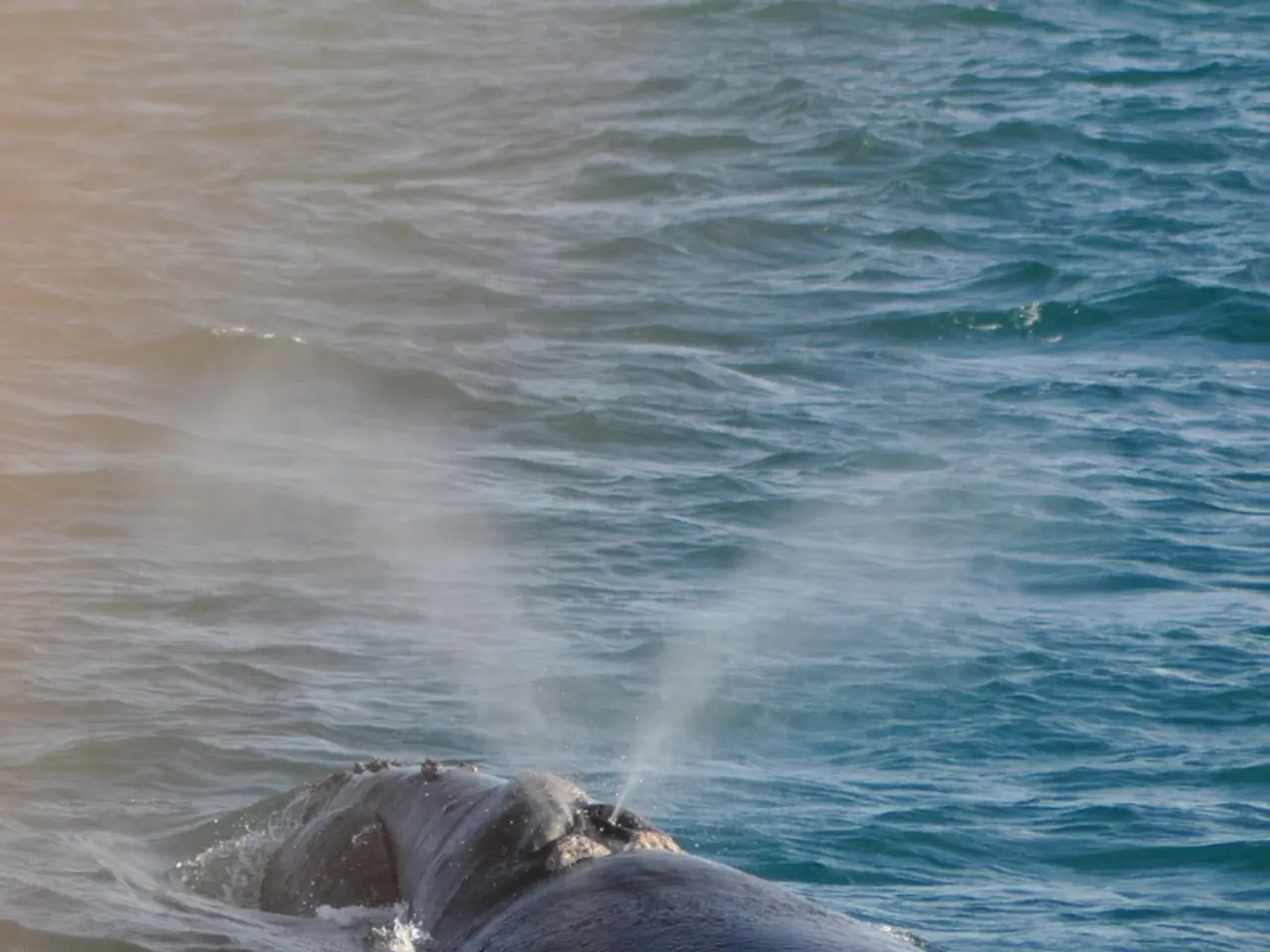Coexisting dolphin species do not automatically engage in food competition
In a groundbreaking research project, scientists from the Federal University of Rio Grande, Brazil, along with researchers from NIOZ, have discovered a new molecular method to study the food competition and preferences of various toothed whale species. The study, published in the prestigious journal Environmental Research, uses the amino acid isotope method to determine the trophic levels of sperm whales, orca, and eight dolphin species in the Southwestern Atlantic Ocean.
Previously, most knowledge about toothed whale food habits came from the stomach content of dead specimens. However, this method has its limitations, as it only provides a snapshot of the animal's diet at the time of death. The amino acid isotope method, on the other hand, offers a more accurate and comprehensive understanding of a marine species' trophic level.
By comparing the base value of the nitrogen in the environment with the value in the sea mammal, the scientists can determine the trophic level of the species. This method improves on commonly used isotope analysis by focusing on nitrogen in free amino acids instead of in the tissue as a whole. This approach enables researchers to correct for the 'noise' caused by an unknown living environment in which they cannot measure the nitrogen value themselves.
The study revealed some interesting findings about the feeding habits of three dolphin species: the short-beaked common dolphin Delphinus delphis, the Atlantic spotted dolphin Stenella frontalis, and the common bottlenose dolphin Tursiops truncatus. Contrary to previous beliefs, there is no overlap in food between these three species. The short-beaked common dolphin hunts in shallow water, while the Atlantic spotted dolphin and common bottlenose dolphin hunt at depths up to 500 meters.
Another surprising finding was that the rough-toothed dolphin Steno bredanensis has a lower trophic level than previously determined. This discovery challenges the understanding of the feeding habits of this species and opens up new avenues for further research.
The amino acid isotope method is set to revolutionize the study of toothed whale and dolphin feeding behavior. By providing more accurate results compared to previously used methods, this method can help fill knowledge gaps about the food habits of these marine species and contribute to a better understanding of their ecological roles in the Southwestern Atlantic Ocean.
For more details about this study, you can refer to the journal Environmental Research with the DOI 10.1016/j.envres.2021.111610. The collaboration between researchers from Brazil and NIOZ is a testament to the power of international research partnerships in advancing our understanding of the natural world.
Read also:
- Peptide YY (PYY): Exploring its Role in Appetite Suppression, Intestinal Health, and Cognitive Links
- Toddler Health: Rotavirus Signs, Origins, and Potential Complications
- Digestive issues and heart discomfort: Root causes and associated health conditions
- House Infernos: Deadly Hazards Surpassing the Flames








